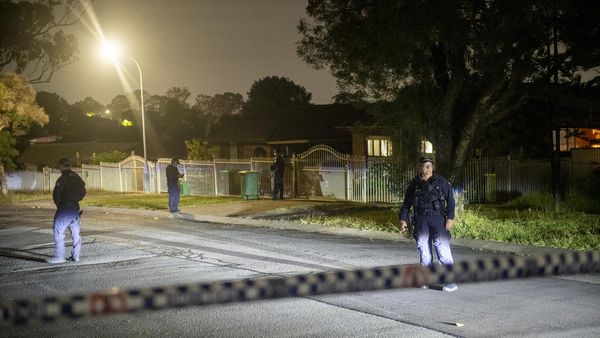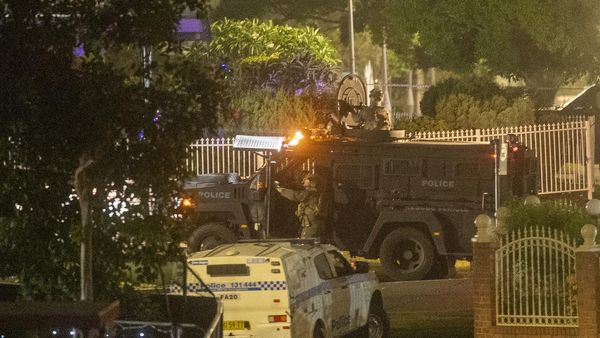
One of the UK’s leading respiratory doctors has raised the alarm about the exploding popularity of vaping among teenagers, saying that without urgent regulation a generation could end up with long-term addictions and lung damage.
Dr Mike McKean, vice-president of policy for the Royal College of Paediatricians and Child Health, said vaping was becoming an “epidemic” among teenagers even though it is illegal before the age of 18. If its rapid growth maintains the same trajectory, almost all children will vape within five years, he said.
He estimated that prevalence could now be as high as 15%, after NHS figures for 2021 showed that 9% of 11- to 15-year-old children used e-cigarettes, up from 6% in 2018, and a figure which rises to 18% for 15-year-olds. Meanwhile, 2022 figures for Scotland showed levels at 10% for 15- to 16-year-olds.
“This is a problem the UK should take seriously. Walk past a school at closing time and you’ll see what happens – large numbers of children vaping,” he said.
“That’s huge amounts of children spending money on products that are not cheap, and they’re inhaling chemicals we don’t know the long-term effects of. There can be large amounts of nicotine, especially in vapes from overseas, and children are becoming addicted to a drug.”
He said there is “lots of evidence” to suggest that many children start vaping despite never having smoked before, meaning they are not using it as a tool to quit, that children as young as 9-10 are vaping, and anecdotal evidence that some children move on to cigarettes.
Vaping involves inhaling nicotine in a vapour rather than smoke, removing the two most harmful elements of smoking, burning tobacco and producing tar or carbon monoxide, which makes it a good tool for weaning smokers off cigarettes.
However, its long-term health effects remain uncertain since it is a recent phenomenon and has grown rapidly in popularity. McKean said it is “a concern” given what we know about the risks of tobacco smoke and environmental pollution, especially for lungs that are still growing and developing.
“I don’t think it’s going to be a sudden thing, but it will grow over time. I’ve no doubt – because it’s happening already in small numbers – that people’s lungs will get damaged. For those who do get lung damage it could be devastating to their lives,” he said.
In recent months, the clamour of calls from campaigners for tighter rules around the advertising and packaging of vapes has been growing louder. They argue that these should mirror tobacco, including plain packaging, health warnings and behind the counter display, while enforcement should be toughened to crack down on shops selling to under-18s.
Last month, England’s chief medical officer, Chris Whitty, described the marketing of vapes as “utterly unacceptable”.
The children’s commissioner, Rachel de Souza, said that child vaping is one of her priorities for the year ahead as she has “real concerns” about the rise, especially as “we don’t yet know enough about the long-term impact this might have on children’s physical health”.
She said: “Children have told me they want a healthy lifestyle, and they know this is important, so we urgently need to learn lessons from the past and ensure there is tighter regulation of the vaping industry as a whole – something I’ll be looking to make the case for as we carry out more work on this issue.”
McKean said it is “staggering” that the regulation of vapes had not been brought in line with that of cigarettes. He said the long-term impact of vaping needed to be “watched and studied in a careful way”, learning lessons from mistakes made with tobacco control in which governments were “slow to bring in rules” and “many people died as a result”.
The benefits of vaping are primarily as a smoking cessation tool for adults, yet it is marketed as a consumer product. McKean said that companies were taking “an insidious and quite disturbing approach” to their marketing, lacing vapes with sweet flavours and targeting children through colourful packaging.
This was reflected in research from King’s College London and Action on Smoking and Health, which found that removing branding from e-cigarettes could deter teenagers from buying them without reducing their appeal to adults. Their study of 2,469 11- to 18-year-olds and 12,026 adults found that teenagers were more likely to say their peers would have no interest in vapes when marketed in standardised white or green packaging, whereas adults said their interest was not reduced.
Eve Taylor, the study’s first author from King’s, said “the ideal situation is to ensure teenagers aren’t tempted to take up vaping in the first place, while not deterring adults from using vapes to stop smoking”, and that the study suggested removing branding was a means of achieving that. The study’s senior author Dr Katherine East, also from King’s, raised the point that using the same packaging as tobacco cigarettes – standardised green – could risk reinforcing the misperception that vaping is as dangerous as smoking.
Experts said that Wednesday’s spring budget could have been a prime moment to introduce tighter regulation and other measures to deter children, such as a tax. In particular, they think disposable vapes – which are most popular with children – should be targeted.
McKean thought a ban on disposable vapes, which are most popular among children, should also be considered, not least for their environmental impact – although he disagrees with the universal vaping bans of several other countries.
He said: “If this was a medicine or a drug put in a tablet it would be incredibly regulated but it’s not – vaping should be regulated as a medicine. It’s a tool for adults who are addicted to cigarette smoking to quit; that’s where it should be, anything else should be stamped out ruthlessly.”
John Dunne, the director general of the UK Vaping Industry Association (UKVIA), said: “No one under the age of 18 should be using a vape device – that’s the regulations. We therefore welcome any credible research that can highlight the long-term health risks of vaping to minors.
“However, any future policy or regulation needs to concentrate on cutting sources of supply to minors and dealing with the rogue operators, not wholesale bans on the likes of flavours and disposable vapes which play a significant role in helping adult smokers quit their habits through vaping.”
A Department of Health and Social Care spokesperson said: “We are clear that children should not use vapes and have introduced regulations to prevent them from vaping.
“The law protects children from vapes through restricting sales to over-18s only, limiting nicotine content, refill bottle and tank sizes, labelling requirements, and through advertising restrictions.
“Adverts for vapes and their components are prohibited from featuring anything likely to be of particular appeal to people under the age of 18, such as characters or celebrities they would be familiar with.”







